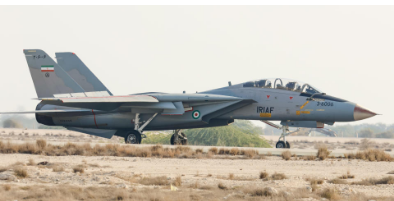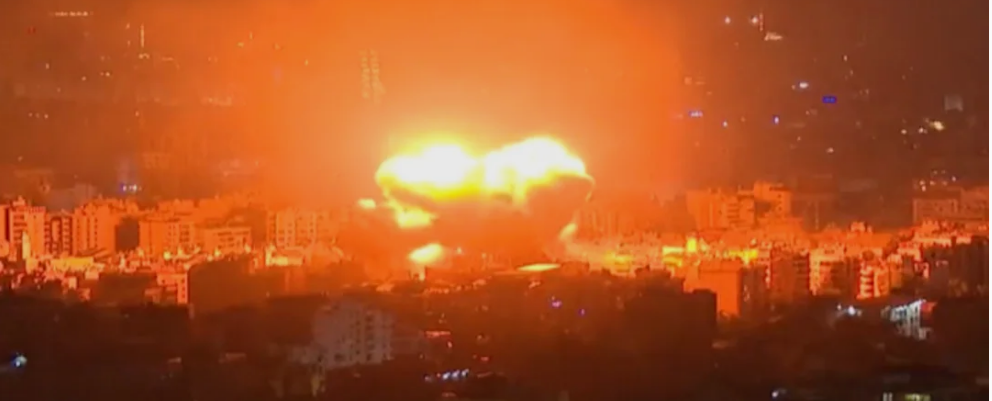
The Israel-Iran conflict has entered a new and dangerous phase. The Israel Defense Forces (IDF) recently confirmed a series of bold airstrikes deep inside Iranian territory, including a targeted attack on two F-14 Tomcat fighter jets at an airport in Tehran. The IDF said the fighter jets were being prepared to intercept Israeli aircraft and posed a serious threat.
This marks one of Israel’s most significant attacks inside Iran, and it has dramatically increased regional tensions. In response, Iran launched hundreds of drones and missiles toward Israel, while also claiming to have shot down an Israeli F-35 stealth fighter jet in Tabriz.
IDF Confirms Airstrikes on F-14 Fighter Jets in Tehran
In a dramatic development, the Israel Defense Forces revealed that it had launched a successful airstrike against two Iranian F-14 fighter jets. These jets were stationed at an airport in Tehran and, according to the IDF, were being prepared to intercept Israeli aircraft.
IDF spokesperson Effie Defrin said in a press conference that the Israeli Air Force identified the jets as an immediate threat and decided to strike. The attack was part of a wider offensive carried out across Iran, including in Tehran and Qom.
The IDF also posted video footage of the attack on its official X (formerly Twitter) account. The footage shows the jets being targeted and destroyed on the tarmac. The caption on the post read:
“RECAP of Our Recent Operations Over Tehran: Strike on two F-14 fighter jets located at an airport in Tehran. These jets were intended to intercept Israeli aircraft. Thwarted a UAV launch attempt toward Israel. Eliminated a launch cell minutes before launch toward Israel after intelligence tracked and identified its launch team deploying UAV launchers and weapons.”
Israel Thwarts Iranian Drone Attacks
The IDF also claimed that it prevented an imminent drone attack by Iranian forces. According to the military, intelligence teams identified an Iranian launch cell preparing UAVs (Unmanned Aerial Vehicles) and weapons for an assault on Israel.
In a swift operation, the Israeli Air Force destroyed the launch cell just minutes before the drones were to be deployed. The IDF released a video of this attack as well, which showed strikes on containers believed to house the drones.
The footage also revealed an airstrike on a state broadcaster building in Tehran, showing the scope and precision of the Israeli attacks.
IDF: Coordinated Operations Target Iranian Military and Nuclear Assets
Israel’s strikes were not limited to airstrips or drone teams. The IDF confirmed that its broader offensive aimed to weaken Iran’s military command structure and slow down its nuclear program.
One of the primary targets was a nuclear enrichment facility near the city of Qom, located about 18 miles away. The facility was reportedly damaged in the attack, although Iran has not officially confirmed the extent of the destruction.
Israeli forces also targeted senior Iranian military officials and nuclear scientists in these coordinated strikes. The aim, according to Israeli officials, was to “eliminate strategic threats before they become active dangers.”
Iran Responds with Missile and Drone Attacks
In retaliation, Iran launched a major counteroffensive. Hundreds of drones and missiles were fired at Israel, marking one of the largest direct confrontations between the two countries in years.
Iran claimed that it successfully shot down an Israeli F-35 stealth fighter jet near Tabriz. The report came from Iran’s state-run Nour News and was also quoted by Reuters. However, Israel has not confirmed the loss of the aircraft.
This military back-and-forth has led to widespread fears of a full-scale war in the Middle East. Several countries in the region have responded by closing their airports and restricting airspace to avoid being caught in the crossfire.
Supreme Leader Ayatollah Ali Khamenei Vows Revenge
Iran’s Supreme Leader Ayatollah Ali Khamenei made a strong public statement, promising severe retaliation against Israel. In a pre-recorded address on Iranian state TV, he said:
“Israel should not think that it is over because they attacked and it is finished. No. They started this and initiated the war. We won’t allow them to escape unscathed from this great crime they have committed.”
Khamenei also confirmed that top Iranian generals were killed in the recent strikes, and vowed that their deaths would be avenged.
Netanyahu: Eliminating Khamenei Would End the War
In a separate interview with ABC News, Israeli Prime Minister Benjamin Netanyahu made headlines by stating that eliminating Iran’s Supreme Leader could bring an end to the conflict.
“It’s not going to escalate the conflict, it’s going to end the conflict,” Netanyahu said.
When asked about a past Israeli plan to assassinate Khamenei that was reportedly vetoed by former U.S. President Donald Trump, Netanyahu did not deny it. He instead criticized Iran for spreading terrorism in the region and said his actions were meant to protect Israeli citizens.
“We’ve had half a century of conflict spread by this regime that terrorizes everyone in the Middle East, and has bombed the Aramco oil fields in Saudi Arabia,” Netanyahu added.
F-14 Fighter Jets: A Rare Legacy Aircraft
One of the more interesting aspects of this conflict is the role of the F-14 Tomcat fighter jets. These aircraft were originally delivered to Iran by the United States before the 1979 Islamic Revolution. Since then, Iran has managed to keep a few of them operational, making it the only country in the world still flying these planes.
Their destruction in the recent Israeli strike represents not only a tactical win for Israel but also a symbolic blow to Iran’s aging air force capabilities.
What’s Next? A Region on Edge
The sustained exchange of attacks between Israel and Iran has put the entire Middle East on high alert. Global powers, including the United States, Russia, and the European Union, have called for restraint and diplomacy to prevent a larger war.
However, with both sides digging in and issuing strong statements, the chance of a peaceful resolution seems slim at the moment.
As airports shut down and people stock up on supplies, the region holds its breath, fearing what could come next.
The latest escalation between Israel and Iran is one of the most serious in recent years. With airstrikes on fighter jets, drone attacks, and threats from top leaders, both nations appear ready for a prolonged conflict.
Israel’s bold operations in Tehran and beyond have struck at the heart of Iran’s military and nuclear capabilities. Iran, in turn, has responded with force and vowed revenge. The world watches as tensions rise, hoping the situation doesn’t spiral into full-scale war.































